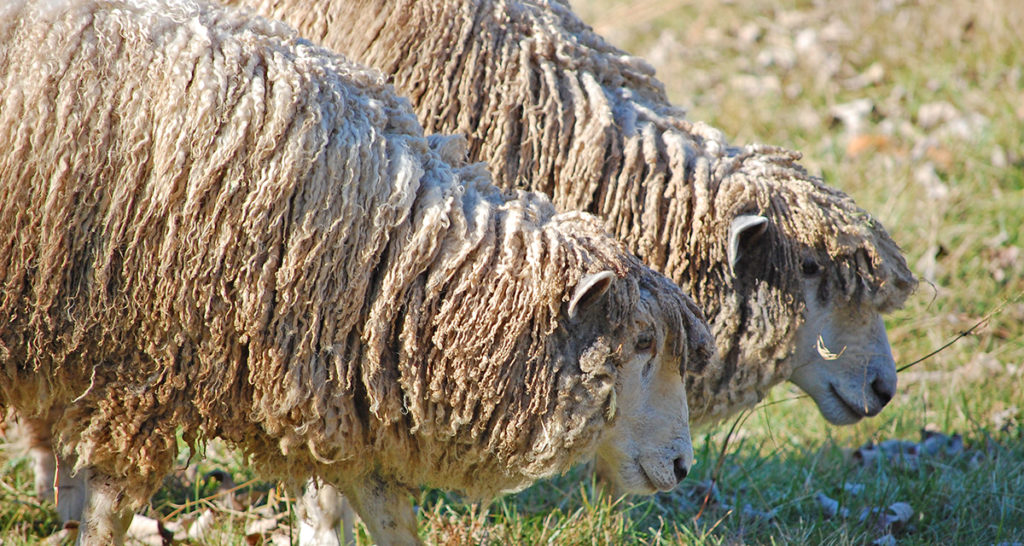
Note: In light of Pennsylvania’s COVID-19 mitigation efforts, tours of the Thompson-Neely House and Farmstead are not offered at this time.
Each spring, the Thompson-Neely Farmstead sheep are sheared using traditional methods. To get a behind-the-scenes look at this process, we spoke with Ross Heutmaker, the park’s Farmstead Manager.
What does your work as the Farmstead Manager entail?
I watch over the Thompson-Neely Farmstead sheep and make sure they’re getting the food and care they need. I also coordinate the nine volunteers who help care for the sheep.
How have the sheep fared in this warmer-than-usual winter?
They’re well adapted to the cold, but they’ve enjoyed eating the grass and weeds that started growing earlier this year. They’ve been out there foraging since early March.
How does sheep shearing work?
The shearer works on one sheep at a time. The sheep are flipped so they’re sitting on their hindquarters, which immobilizes them. Once they’re in that position, they relax, and the shearing doesn’t bother them. They’re sheared using traditional hand shears, which look like scissors but close the other way.
Beyond the historical accuracy, there are two advantages to using hand shears. First, the wool comes off as a large piece instead of smaller pieces, which makes the wool easier to process. And second, electric clippers make a loud buzzing sound. Hand shears are less bothersome to the sheep.
What do you do with the fleece gathered after shearing?
Each sheep can produce up to 20 pounds of fleece, so there’s a lot of wool to process! First, we sort it out to remove damaged pieces, hay, and sticks. That’s called picking. From that point, we bag up the wool and send it to Blue Mountain Mill in Harrisburg to be processed. It comes back to us as roving and yarn that we sell in the park gift shop.
Of course, back in Washington’s era, the processing was done on-site. After sorting and picking the wool, it was washed to remove dirt and lanolin, which is the oil that keeps the sheep dry. Then the wool was carded, which involves combing it out and aligning the fibers so it can be spun. After that, it was turned into yarn on a spinning wheel.
The sheep that live at the Thompson-Neely Farmstead are heritage breeds. Can you explain what that means?
Heritage breeds are the breeds that were raised for centuries in the past, before modern-day industrial agriculture. Breeds were cultivated over time to keep the animals well-adjusted to their environments.
The sheep raised in colonial America were mainly British breeds, so that’s what you’ll find at the Thompson-Neely Farmstead. We have 14 sheep—we got six new ones this year—and most are heritage breeds.
Six of them are Leicester Longwools, which is the breed that Washington brought for his flock at Mount Vernon. These sheep have long, durable, lustrous wool. We also have four Dorsets, which produce a softer and finer wool than the Longwools. The other sheep are a combination of Cotswold, Baby Doll Southdowne, and either Hampshire or Shropshire.
Did most people in the colonial era have sheep on their farmsteads?
Rather than keeping just one type of livestock like many farms today, people had a variety of animals. Many families had chickens, at least one cow for milk and butter, and a few sheep. They never relied too heavily on one animal or crop in case something went wrong.
The work of caring for sheep, shearing them, and processing their wool would have been split up among the family members. Children cared for lambs and brought the sheep food and water. At shearing time, the father would often shear the sheep, and the children would help sort the wool. The mother would typically wash the wool, spin it into thread, and create the garments.

